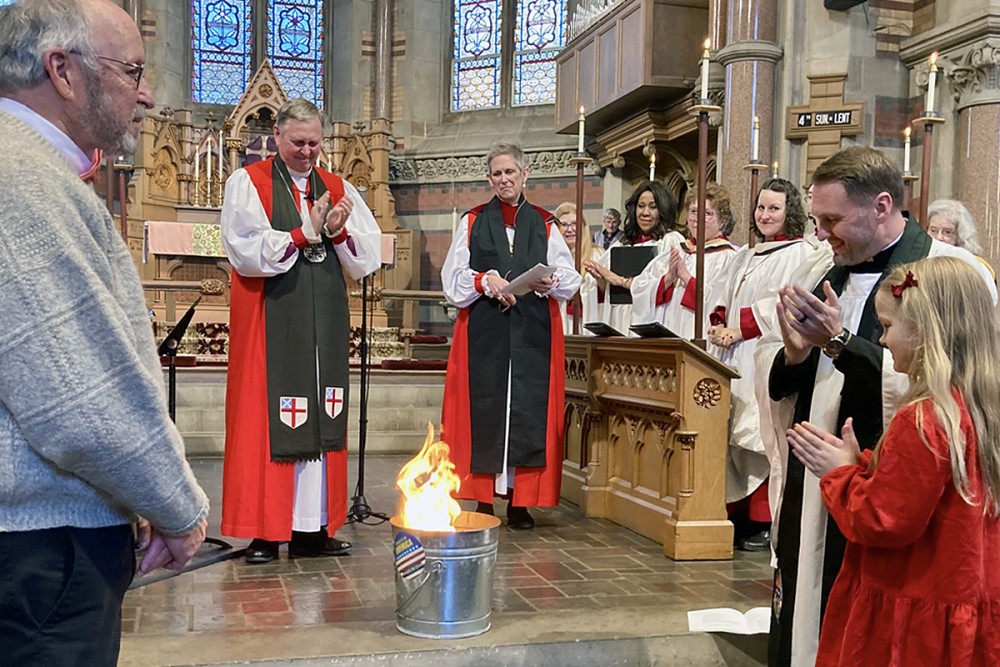Episcopal churches in Pennsylvania raise funds to eliminate $3 million in medical debt

From Left: Rob Gokey, Bishop Kevin Nichols, Bishop Audrey Scanlan, Bradley Mattson, and Elizabeth Mattson applaud the ceremonial burning of $3 million in medical debt at a March 10 service at St. Luke's Episcopal Church in Lebanon, Pennsylvania. (Photo by Steve Doster)
The leaders of two Episcopal dioceses in Pennsylvania—Central Pennsylvania Bishop Audrey Scanlan and Bethlehem Bishop Kevin Nichols—on March 10 celebrated the efforts of the Help, Healing and Hope initiative, through which churches from both dioceses raised $30,000 to eliminate $3 million in medical debts of fellow Pennsylvanians.
During an Evensong service at St. Luke’s Episcopal Church in Lebanon, Pennsylvania, the two bishops joined the congregation as sheets of paper representing medical bills were set aflame in a metal bucket.
“Things like taking care of medical debts . . . is not merely social work, it’s the work of God,” David Zwifka, St. Luke’s rector, said in his sermon. People are liberated when the crush of medical debt is removed from their lives, he said, calling this “the very work of Jesus.”





